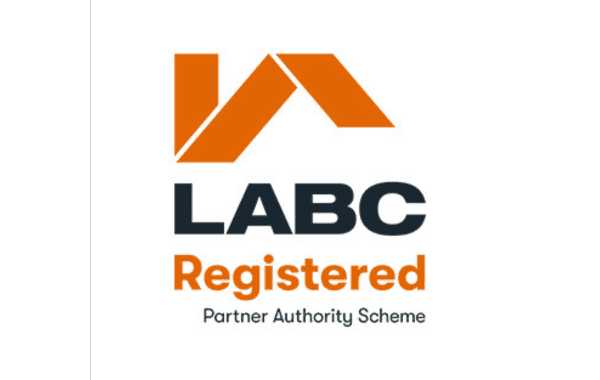
Health & Safety Advisor CDM
Construction, Design and Management (CDM) consultants have extensive experience in providing health and safety management across all sectors of the property and construction industry.
They will identify hazards at an early stage so they can be eliminated or reduced at the design or planning stage, and properly manage any remaining risk. To facilitate this dialogue, They will act as a liaison between the design team members.

CCTV Drainage Surveyors
CCTV refers to the camera these professionals use to check the health of your drainage system. They’ll map out your drains, and check to see if your project will run into any potential issues in this area. Your surveyor might then recommend you get a build over agreement in place before any construction starts.

Structural Engineers
Structural engineers are mainly needed if you’re doing anything that might affect the structure of your home. Be this a rear extension, dormer loft conversion, or even removing a chimney. Typically during the building regulations stage, your structural engineer will calculate your proposed structure’s weight and specify critical elements such as steel beams loadbering wall etc.

Party Wall Surveyor
A party wall is a wall, boundary, or outbuilding that you share with another household. These are common between terraced and semi-detached houses but can also affect detached properties if you share a garden wall or invisible boundary line.
While it can be quite easy to spot a shared party structure, such as a wall between two terrace properties, it can be difficult to spot shared boundaries. For this reason, we always recommend having an architect on board, who will be able to spot these issues ahead of time and advise you when to act.
(1) Party Structure Notice
Party Structure Notices are served under Section 2 of the act, generally speaking, these are alterations that directly affect the party wall and include common jobs such as cutting holes to insert beams and padstones, cutting in flashings and removing chimney breasts.
(2 & 3 ) Notice of Adjacent Excavation
Notices of Adjacent Excavation are concerned with works notifiable under Section 6 of the Act. There are two types of excavations that are covered under Section 6:
Excavating within 3 metres of your neighbour’s building and to a depth lower than the bottom of their foundations
Excavating within 6 metres of your neighbour’s building, if any part of that excavation intersects with a plane drawn downwards at an angle of 45 degrees from the bottom of their foundations, taken at a line level with the face of their external wall (this will normally mean that you neighbour is using piled foundations).
The notice must contain the same information as a Party Structure Notice but also be accompanied by plans and sections showing the extent of the proposed excavation.
With each of these types of notices the adjoining owner has 14 days to respond after which they are automatically deemed to be ‘in dispute’ and obliged to appoint a Party Wall Surveyor
(4) Line of Junction Notice
This is the least common of the notices and is served under section 1 (2) of the Act and again covers two distinct tasks:
The construction of a new wall adjacent to a boundary.
The construction of a new wall astride a boundary.
The notice period is one month.
If the adjoining owner does not respond to a section 1 notice relating to a neighbour’s intentions to build a new wall up to the boundary, the work can commence when the notice period has expired. The building owner may place any necessary footings and foundations (with the exception of reinforced foundations known as ‘special foundations’) under the adjoining owner’s land provided that it is necessary.
The building of a new wall astride the boundary is the only type of work covered under the Act which the adjoining owner can prevent. If the adjoining owner does not respond in writing within 14 days the building owner will have to build the new wall entirely on his side of the boundary line. Again, the building owner may place any necessary footings and foundations (with the exception of ‘special foundations’) under the adjoining owner’s land.
Serving Notices
Notice can be served in person or by post. If the adjoining owner’s name is not know the notice can be served on “The Owner” although in this situation it has to be either delivered personally or displayed on a conspicuous part of the premises.
Who pays for the Party Wall surveyor?
Normally it’s the building owner that’s carrying out the notifiable works who pays for Party Wall surveyor(s) – whether this is one surveyor acting for both parties, or the individual surveyors on both sides.
There are some circumstances where the fees may be liable against both parties, such as if there is work being done on the Party Wall due to disrepair or costs have been unreasonably incurred by the adjoining owner during the process. The Party Wall surveyor will determine the liability and the appropriate fee within the award.
What if my neighbour refuses the Party Wall agreement?
It is always best to talk to your neighbours to understand why they have refused the Party Wall agreement – you may be able to resolve any issues they may have.
If your neighbours do refuse the Party Wall agreement then you must appoint a surveyor, ideally the same one for both properties to reduce expense. The surveyor will grant a Party Wall Award and this will determine the work that can be carried out, how it should be carried out and when it can be done. They will also survey the properties before and after the work and you will need to reimburse any damage to your neighbours’ property.
What if I don’t observe the Party Wall Act?
If you fail to get a Party Wall agreement from your neighbours, they are in their right to serve an injunction and delay the work until you have an agreement. Your neighbours can also take civil action and receive compensation for any disruption.
How long does a Party Wall agreement last for?
Building works must have started within 12 months after the 1st day that you served notice.

Planning Consultant
The result of a planning decision is so important that it is worth going to some lengths to present your arguments in the best possible way. Depending on the nature of the project, a professional Planning Consultant can help do this. We would advise in advance if one is required to support us in the development process.
Some planning issues are fairly straightforward and this can be handled in house and may not need the expertise of a Planning Consultant. However, many others involve arguments as to the interpretation of planning policy and local development plans. If the arguments relate to planning law and precedent interpretation, the planning consultant is there to lean on.
Consultants can also offer expert insight on how best to approach a project to achieve the desired outcome. Their input can help you refine your plans to ensure you are pursuing the most suitable options for your development.
Employing a consultant will not guarantee you approval, but it will significantly increase your application’s chance of success.

SAP Assessor
SAP stands for ‘Standard Assessment Procedure’. It is the official government approved system for assessing the energy rating for a new home. SAP assessors must be accredited and registered with a certification body. SAP measures the energy efficiency/rating of new buildings including the CO2 emissions and predicted fuel costs.
In order to meet current building regulations, home builders including some home improvers will need to gain a ‘pass’ on their SAP Calculations. Without it, building control will not sign off the development and the property cannot be let or marketed for sale.
Your designer will normally handle this on your behalf and liaise with the SAP assessor to obtain building regulations approval. Your drawings need to be scaled, accurate and show all elevations, sections, floor and site plans.
Many extensions (this includes home extensions), conversions and change of use schemes will require SAP Calculations under Part L1b of the building regs:
-Extensions with more than 25% glazing-to-floor area (SAP Calculations for Extensions)
-Barn conversions
-Commercial to domestic conversions
-Conversion of a single dwelling into flats or apartment
The one key point is to start early. If the SAP assessors receive the drawings during a build, there’s not a lot they can do to change the energy performance of that building.

Approved Inspector
Approved Inspectors are businesses which work in the private sector as an alternative to Local Authority Building Control (LABC). an Approved Inspector will be registered with the Construction Industry Council (CICAIR) to advise and guide clients about the Building Regulations.
Approved Inspectors can be used instead of your local authority. They provide a cost-effective and client-friendly alternative to LABC by delivering specialist advice to clients about a range of project developments and types.
The Approved Inspector works with the team throughout the construction process. They will offer advice and check that any building work undertaken is done so in compliance with the Building Regulations. This includes taking responsibility for plan checking and inspecting any building work through a series of site inspections.
When you appoint Building Control they will jointly notify your local authority of your intended building work. This is done via an Initial Notice submission. The Initial Notice is sent to a local authority, who approves it. Once the notice has been accepted the Approved Inspector assumes responsibility for plans checks and site inspections on your project.
Their role includes:
Giving advice about how the Building Regulations apply to your work
Checking your plans
Issuing a plans certificate (if requested)
Inspecting the work as it progresses
Issuing a final certificate.







